Belize’s charm is hard to put into words, but the best description might include the phrase “rustic paradise.” This is a barefoot nirvana, where you can hitch a ride on a skiff with a local fisherman for a day, then walk into a restaurant and have them cook your catch for you. You can climb Maya ruins without a guardrail in sight, or swim with whale sharks in Caribbean waters. You can see and touch ancient Maya pottery deep in a cave system, hike through the rain forest, swim in waterfalls, and jump off small cliffs into the sea without signing a waiver.
All these are reasons why this tiny country seems to be on everyone’s radar recently. The LA Times rated Belize as one of its 10 top places to go in 2019. So, too, did both Lonely Planet and National Geographic. Condé Nast Traveler recently published a feature entitled, “Why You Should Go to Belize Now.” It’s a timely endorsement of a country that we at International Living have been telling our readers about for dozens of years, and which has always performed strongly in our Annual Global Retirement Index.
Belize is a tiny country, barely the size of New Jersey, with just 380,000 or so residents. So why does this little place—with one of the lowest population densities in the western hemisphere—get all this attention? Has something changed?
Yes and no. For decades, development in Belize has lagged significantly behind that in other Caribbean or Central American destinations. Improvements to infrastructure and services have come more slowly here. That unspoiled, rustic feel has been part of Belize’s appeal for the backpackers, adventurers, and quirky souls who have come here. But change is on the horizon. Today, hotel chains, cruise lines, and others are eying Belize, even as mainstream tourists demanding more amenities turn up in increasing numbers.
For now, though, Belize maintains its traditional atmosphere. New visitors find in Belize a place that’s unapologetically casual, warm, and welcoming. Signposts, menus, paperwork, and conversations are all in English, as this is the official language. There’s a loose mix of Caribbean charm, with just enough North American culture to make you feel comfortable right away. All reasons why Belize—still a developing a country—has been on the well-informed traveler’s and expat’s bucket list for decades.
Doing Business in Belize
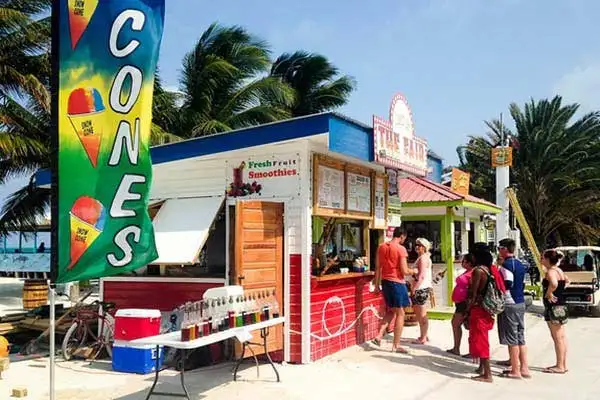
Being a small country on the up makes for business opportunities. That’s because so many fundamental services are still waiting to be filled in Belize. Compare this situation with more established Caribbean destinations, where every niche is overrun with competition.
My husband, David, and I moved here in early 2014, after a year spent researching how we would make a living. We fell in love with the coastal areas, particularly Placencia, Ambergris Caye, and Caye Caulker. We aren’t the only ones—these are the three most popular areas for expats. The mix of tropical beach atmosphere, established amenities, a readymade expat network, and plenty of North American influence led to an easy, fun transition.
We purchased a piece of land in Placencia village, and, after observing that the peninsula was slowly moving toward higher-end hospitality, we opened the village’s first boutique hotel. We’ve had a lot of success in Belize, partly because there are so many unmet niches. We bought our second hotel in Ambergris Caye. This is a harder market to break into than Placencia’s, because it is a more established destination. Nevertheless, there is still plenty of room for growth. Ambergris Caye gets about 60% of the country’s tourism, which is a huge plus.
For our next project, we are focusing on Caye Caulker. Like Placencia, the island is still quite undeveloped, with plenty of opportunity for growth. Caye Caulker has the benefit of being the easiest of the three locations to access from Belize City, and it is extremely popular with tourists and expats. Why? Well, there are hardly any cars on the island, just golf cart traffic. The streets are all sand, strolled by pedestrians and lazy dogs. Friendly locals running dive shops, food stands, and bars will welcome you and call you over. And you can see the sea from almost anywhere you stand. That elusive Caribbean charm is everywhere. Caye Caulker has an old-fashioned, untouched look, like a 1950s Caribbean postcard. It has no fancy all-inclusives. Instead, it’s mostly guesthouses, hostels, boutique hotels—all pretty simple, and all within reach of the individual entrepreneur.Ambergris Caye is an entrepreneur's dream.However, less than a mile’s boat ride south of Caye Caulker is Caye Chapel. Tales of million-dollar homes being planned and sold, a golf course, and an upscale Four Seasons hotel coming to the island are still rumors at this point. But they’re enough to cause a buzz on Caye Caulker, and optimism about how the development might boost the economy. There’s a definite sense that now is the time to get to Belize, whether to invest, visit, or retire. It could, in time, become as exclusive and pricey as Caribbean neighbors like the Bahamas or the Virgin Islands.
For those who are here already, that’s all good news. One expat, Holly Boren, moved from Colorado to set up a real estate and design firm on Ambergris Caye (along with the island’s only “Southern” restaurant: K’s Diner). She’s found that Belize is ripe with potential for the entrepreneurial expat. “The growth Belize is experiencing is quite unique,” she says. “To me, Ambergris Caye is an entrepreneur’s dream come true. If you dream of running your own B&B, or perhaps trying your hand at a restaurant, beachfront bar, or coffee shop…it can be yours.”
Kenny Guinn came here from Texas in 2013. “Once I’d made it to Belize, my plan was to retire here,” he says. “But my finances were such that that wasn’t an option. I decided to retool my research to look for business opportunities.” Kenny went on to develop a successful laundry operation in Ambergris Caye and has since diversified into the entertainment business. He’s just one example of many forward-thinking entrepreneurs who are finding ways to make Belize’s growth work for them.
In the Sittee River region, to the south, Ken and Taunya Burns run the Leaning Palms Resort, a low-impact operation on the beach at Gales Point. They paid $50,000 for an acre of beachfront in 2016 and have since developed a thriving business. “We put up a couple of cabañas made of local hardwood,” says Taunya. “We swept the beach of driftwood, and now we have paying guests—all in less than a year. We’re booked solid for three months.”
The Qualified Retirement Program
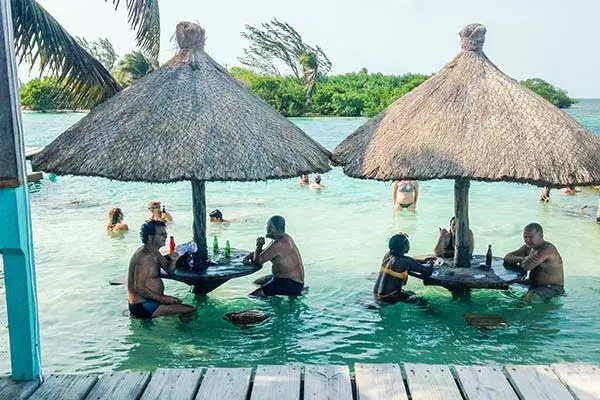
Many expats in Belize take advantage of one of Central America’s most welcoming retirement visas, commonly known as the Qualified Retirement Program (QRP).
The benefits of the program are substantial, including permission to bring your personal goods to Belize tax-free, and exemption from the obligation to pay Belizean taxes on any foreign-earned income.
Although the name suggests that you must be retired, in practice, it’s not always necessary. Under the QRP you can still work, as long as you don’t receive a salary from a business or company housed in Belize. Many expats, for instance, work as consultants to clients in the U.S., Europe, and elsewhere outside Belize (offshore). By incorporating as an international business company, QRP expats in Belize can enjoy even more tax advantages.
To qualify, you need to be at least 45 years old and be able to prove that you have investments, a pension, or another form of retirement benefit that will generate $2,000 a month from outside Belize. Your Social Security payments can be used to qualify for this program. You can also qualify if your stated income comes from an IRA, 401(k), or another source of investment income.
How Affordable Is Paradise?
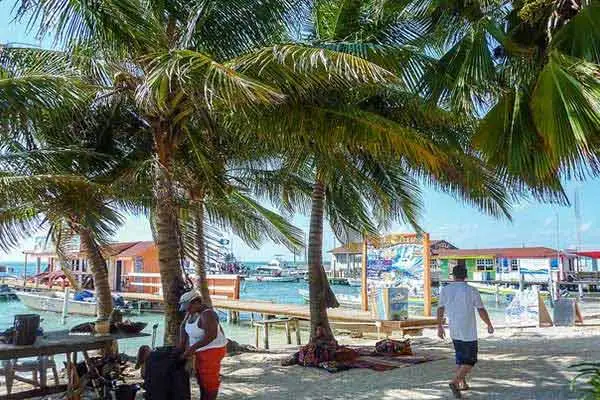
Holly Boren, originally from Texas, finds the lifestyle here suits her perfectly. And it costs far less than the other Caribbean locations she got to know when she used to sail her 36-foot Endeavor boat in the region. She was looking for somewhere with excellent diving, sandy beaches, and business opportunities. She also wanted a location that would be safe and comfortable for a single woman in her 50s. She found all that and more in Ambergris Caye. “I rent a two-bedroom, top-floor condo directly on the ocean for $1,300 a month,” she says. “It has vaulted ceilings, balconies off every room, huge decks for entertaining, and I have access to a swimming pool and a restaurant/sports bar. My electricity runs around $150 a month, and water and cable are included. I also have a bicycle and I can ride it anywhere.”
Another very special, and likely unchanging, characteristic of Belize is that locals and expats/residents take the time to hear your story and learn your name. They ask, “Where are you from?” and not “What do you do?” It’s a come-as-you-are-place, with no room for formality. People who live here have the local doctor’s cell number on their phone, and he still does house calls.
Canadian Shaylene Todd has been living in Placencia for almost 10 years and immerses herself in the local community. It’s her way of returning the welcome she got when she arrived. “I love to volunteer and give back in as many ways as I can,” she says. “There’s no shortage of opportunities here—from collecting shoes for the Seine Bight Running Club, cooking for the local orphanage in Punta Gorda, or organizing beach clean-ups.” She finds the atmosphere in Belize has changed her priorities, too. “In general, I think that life is much less stressful in Belize. There is definitely a ‘don’t worry, be happy’ Caribbean attitude that takes hold of you, and you find yourself sweating less about the small stuff. I’m definitely more of a minimalist than I was when I lived in Canada.”It's an easy two-hour flight from the U.S.And there are other compelling reasons why Belize is gaining in popularity. It is an easy, two-hour direct flight from many hubs in the U.S., including Houston, Miami, and Atlanta, and you can use your U.S. dollar here (it is accepted everywhere, at an easy rate of two Belizean dollars to one U.S. dollar). What’s more, the cost of living is affordable, particularly for groceries. A couple can live well from $1,400 a month. “When I do cook at home,” Shaylene says, “there’s never a shortage of fresh fish—you can buy it from the co-op near the main pier. They sell whatever is in season, from crab legs to lobster and conch. Unlike in Canada, I don’t buy produce in the grocery stores. I buy from the wonderful little fruit and veg stands in the village that are serviced by local farms.”
Another way to experience local food is to look for inconspicuous, shack-like structures that are often built on the side of homes. At these food shacks, you’ll usually find gas burners and huge vats of rice, beans, stewed chicken, soups, fried plantains, plus coleslaw and potato salad. This delicious combo is practically the official meal in Belize and can be enjoyed for $5.
For accommodation, you can find everything from a furnished house with a large yard, set among the mountains, rivers, waterfalls, and forest of the Cayo District, for $450 a month. At the other end of the scale, a two-bedroom condo with an ocean view on the beach at Ambergris Caye rents for around $1,200 a month. If you pick a price-point somewhere between the two, chances are that you’ll find the place that’s right for you. As to the most popular expat destinations in Belize, the standout names are Ambergris Caye, Placencia, Caye Caulker, Corozal, Hopkins, Punta Gorda, and the Cayo District. Ambergris Caye is the most developed of these locations. Things get more rustic (or unspoiled, if that’s how you view it) as you go through the list. Except for the Cayo, these are all coastal towns and villages, each with distinct personalities.
Living costs can be low. Mark and Jackie Baker, both in their 60s, retired to the fertile Cayo District in 2010. “The cost of living here in Belize is dramatically less than in the States,” says Mark. “Our electricity bill in the U.S. during the summer months in Arizona was $275 a month. Here, it’s less than $60. Our water bill in the U.S. was $20 a month. Here it is $9 a month. Our land taxes are only $5 a year, so we pay five years at a time. Our property taxes in Arizona were $8,400 a year.”
Fred Brown, originally from Los Angeles and now living in the Sittee River region, also feels that living in Belize suits him better than his old life in California. “Why in hell would I want to retire in the U.S.? Life is affordable here, life is sweet. I bought a tiny island; now I have a project in retirement. What could possibly be better than that?”
Healthcare Options in Belize
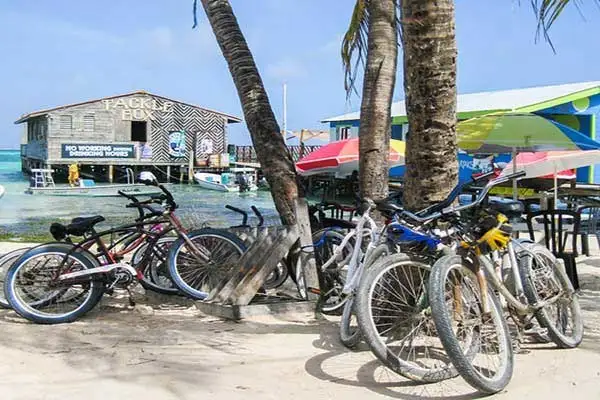
With a population of under 400,000, Belize lacks the tax revenue needed to provide world-class public healthcare. If you suffer from a chronic condition or need specialist treatment, you should bear this in mind before considering a move. That said, for most medical situations, Belize has you covered. Minor ailments and many emergencies can be treated by physicians at public clinics or at a Red Cross (Cruz Roja) emergency station. These can be found nationwide, in all but the smallest of towns. A good option is to invest in an insurance package that includes emergency transportation to the U.S., in case of need. It’s only three hours away by air.
Most of the country’s hospitals are found in Belize City. Of these, two excellent private hospitals are Belize Medical Associates and Healthcare Partners. Most expats choose to pay for the more comprehensive care provided at the private hospitals, and rates are very reasonable compared to U.S. prices.
The towns of San Ignacio, Corozal, Dangriga, and Punta Gorda also have 24-hour care hospitals.
Currently, there are no hospitals on the cayes or in Placencia or Hopkins. But the private clinic, Los Pinos, and the public polyclinic on Ambergris Caye have expanded to offer 24-hour care, with a doctor on call. Neither can perform surgeries on site. But both medical facilities are next to the local airstrip, which was upgraded to allow for emergency night flights. In an emergency, they can facilitate a flight to one of the hospitals in Belize City.
The Future
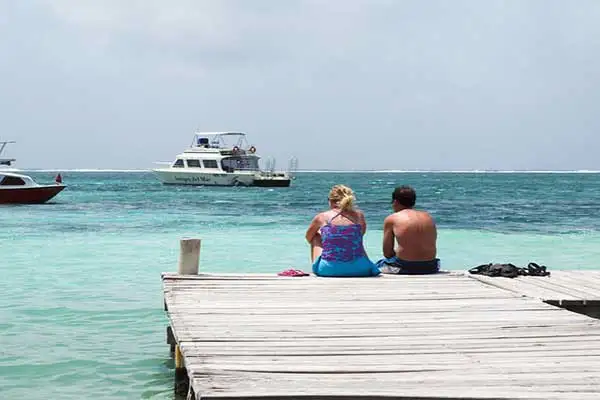
Historically, Belize has been a place for adventurous, flexible spirits: backpackers, fishermen, and divers. People looking for an unspoiled paradise, who were willing to do without modern conveniences. That, in fact, was the charm. Francis Ford Coppola’s resort in Placencia was one of the country’s first “luxury” developments, and to this day it does not have air conditioning in its accommodation, by choice. Its ethos includes the premise that visitors come to Belize to experience the immediate environment, not a climate-controlled cell. This distinction is where you can start to see a split in marketing philosophies. Visitors today, used to having air conditioning, in-room fridges, WiFi, pools, and other amenities, find that Belize offers a very different experience. But that’s changing quickly.
To stay in business, tourist areas must meet the expectations of their target market. You can still find the cozy guesthouses and cabañas on the beach, many with only the most basic amenities. (But when they’re sitting on the edge of the Caribbean Sea, swaying in a hammock… many visitors feel they aren’t missing a thing.) But as Belize has started to cater to a more mainstream market, the offerings have changed.
For now, most of Belize still looks like a rustic paradise, and it will do so for some time to come. One reason that even relatively small changes appear dramatic is that the areas where these changes are occurring are such small communities. Ambergris Caye still has only 16,000 or so residents, and while that number swells with expats and tourists, Ambergris is still a small town. Smaller again is Placencia, with around 6,000 residents on its 16-mile peninsula. When a new restaurant or bar opens, or a new service is offered, even if a new house is being built…it creates a buzz.
In Ambergris Caye, for example, the first chain hotel has opened—Mahogany Bay, a Hilton Curio hotel. In southern Belize—even less developed than the rest of the country—Norwegian Cruise Lines opened its own “Harvest Caye” island resort last year. One happy result is that Landshark lager is now distributed in the country, due to an agreement between the government and the cruise line. There’s always an angle for opportunity in Belize, and this is a welcome one. Before the deal, you could only easily buy Belikin, the national beer.
If you read about Belize, you will find a vast range of opinions. Yes, new business and investment is still welcomed. But that welcome comes with the understanding that development is done with the best of intentions, where locals truly benefit, where the environment is respected and unharmed, and where the bottom line motivation is to leave Belize better than you found it. There are many success stories of happy, integrated expats and business/homeowners here. Then again, there are also individuals who found the atmosphere a bit too undeveloped to be comfortable for them.
Belize will experience many changes in the coming years. There is much to be proud of and a lot going well. In the last couple of years, the government has decreed that there will be no offshore oil drilling in its waters. It has also made a commitment to rid the country of single-use plastics. Another accomplishment is the stringent program that all guides must complete before they are permitted to lead tours with visitors. This is evident in the high quality of tours, tour guides, and the respect with which they treat their environment.
While there will continue to be heated arguments about developments in some places, there are still a vast number of locations—such as the Cayo District, Caye Caulker, much of Placencia, and Stann Creek—where you can experience Belize the way backpackers did decades ago. Belize has maintained its “go slow” pace and culture in the face of the changes. And with the passion Belizeans and expats are bringing, chances are better than ever that those who bring change to Belize will do so in a way that works out as a win-win for all.
